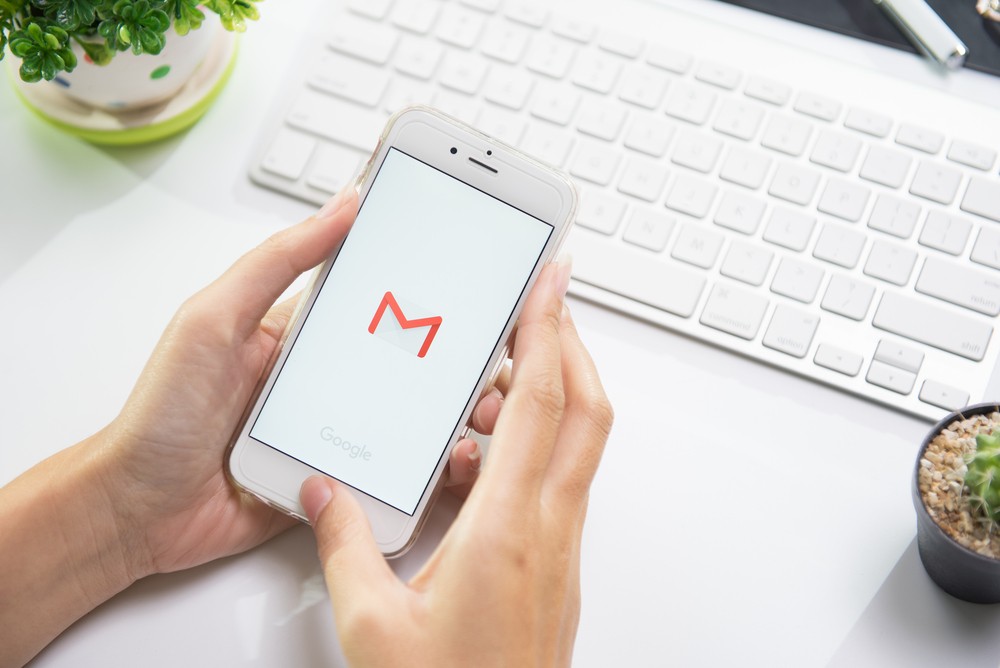Popular Reads
Top Results
Can't find what you're looking for?
View all search resultsPopular Reads
Top Results
Can't find what you're looking for?
View all search results5 overlooked secrets of a great email
Change text size
Gift Premium Articles
to Anyone
Email is the most used tool for communication at the workplace, yet also the most misunderstood.
As a content marketer at a Kuala Lumpur-based startup that operates in seven Southeast Asian countries, I used email for 90 percent of my external communication. Poorly written, unclear, misleading or ineffective emails cause not only a loss of time and productivity, but they also harm one's reputation as it leaves a poor impression on the receiver.
I spent a lot of time reading articles about email outreach and conducted a/b testing to see which type of email is effective for which receiver. I have concluded that there are five rules you should consider following when composing and sending an email.
Send it to the right person
In my line of work, I communicate with a lot of writers, journalists and editors working in media in Southeast Asia.
If you want to talk with a media person via email, there are two options: through general editorial email or personal work email. Based on my experience, the latter is far more effective. I get a higher reply rate and higher publication rate when contacting editors and journalists via personal email.
Getting a personal contact might be tricky. First, ask around. The simplest way to get someone's contact is to refer to existing connections, including family and friends.
Read also: Thinking about going into business? If you’re a woman, please do
Second, use social media. It is almost certain that a media person has a least one social media account.
LinkedIn, for example, is one of the most effective platforms for getting in touch with journalists and editors. Find their name from published articles, then look them up on Linkedin. After finding their LinkedIn profile, send them a personalized connection request. Let them know that you have something you want to share and ask for their email address.
Third, read their editorial page. Some media outlets provide the email of an editor on the editor's page, which is typically found at either the top or bottom of the website.
Whether you are a sales person, account manager, content marketer, public relations specialist, or any profession that uses email for day-to-day communication, sending your email to the right contact will increase the success rate.
Make the subject line compelling
Every day, editors from top media outlets receive 25 to 50 emails from individuals or brands. With limited time, they tend to selectively choose the emails they prioritize reading. The subject line determines which email they open first.
For an effective subject line, make it short. Forty percent of emails are first read on mobile devices, so keep your subject short and sweet.
Read also: Confessions of a millennial: Job-hopping and burning bridges
Second, make people feel special. The feeling of exclusivity is a powerful thing. Depending on what you are trying to promote, there are several phrases you can use for this: "You are invited", "Exclusive announcement", "Special content for...", and many others.
Third, the subject needs to pertain to what is inside. For example, if you want to pitch a story, use, for example, "An iPhone 8 Infographic Study for Media A." To introduce yourself via email, consider saying: "Hi (Personal name)!”
If you are doing it right, you will stand out from the crowd.
Personalize your email
Three months ago, I interviewed 12 editors from top media outlets in Indonesia, and all of them shared that personalized emails caught their attention more than generic ones. Based on the interviews, they said only a few startups sent well-crafted personalized emails, most of which involved the help of a PR agency.
To personalize an email, first mention their name or the name of the media company. A name is something special that a person has. You can include at the beginning when you greet them, and at the bottom when you say thank you. For example, for the person's name: “Good morning Andrew,” and “Have a great day Andrew.” For the media's name: "I want to share this study to Media A.”
Second, have context. For editors to tell good stories, they need great characters. They need characters with personalities, opinions, their own great stories to tell and a perspective. You can start by briefly explaining the story you want to share and why the story is important.
Read also: How to be more productive at work
When you are pitching your story to big media groups, you are fighting with other brands that also want to get coverage from them. So make sure the content of your email catches their attention.
Craft a structured body
Just like in speeches, emails must be interesting and tell a good story. To do so, make sure the email is easy to follow. A good email should consist of an opening, a main message and a closing. The opening consists of a very brief introduction of who you are, where you got their contact and why you are sending the email.
The main message consists of the main thing you want to offer. It can be the details of the offer or ask, or the data you want to share, among other things.
One mistake people often make when closing their email is summarizing the content. A clear call-to-action is a more suitable way to end an email. If you are a sales person, you can request a time to call or meet. In my case, I share stories and information, so I remind them that they are welcome to come to me for any questions.
Send it at the right time
To increase the chances of getting a response, send the email at the right time.
Based on my interview with the editors, some recommend sending the story in the morning (8 a.m. to 10 a.m) or in the evening (4 p.m. to 6 p.m.). The right hour differs between editors.
In finding the right time, make sure the content is time sensitive but with enough time given for them to reply. For example, if it is about a meeting request, send the email 3 to 4 days ahead of time.
Second, email them when they are in the office. Working is tiring, so when you are going home, you want to rest and not read emails. A lot of studies state that the best time to send an email is around 8 a.m. to 12 p.m.
A good email is not only good for your work, but it is also good for personal branding. When you consistently send good emails, the receiver will remember you, thus increasing the success rate of your email.
Journalists and editors receive a lot of bad emails. So stand out from the crowd, and put in that extra care into crafting your next email. (dev/kes)
***
Andrew is a creative junkie, blogger and digital enthusiast. He has huge passion for traveling the world and an interest in personal development books. He works at iPrice.
---------------
Interested in writing for thejakartapost.com? We are looking for information and opinions from experts in a variety of fields or others with appropriate writing skills. The content must be original and on the following topics: lifestyle (e.g. beauty, fashion or food), entertainment, science & technology, health, parenting, social media or sports. Send your piece to community@jakpost.com. For more information click here.











